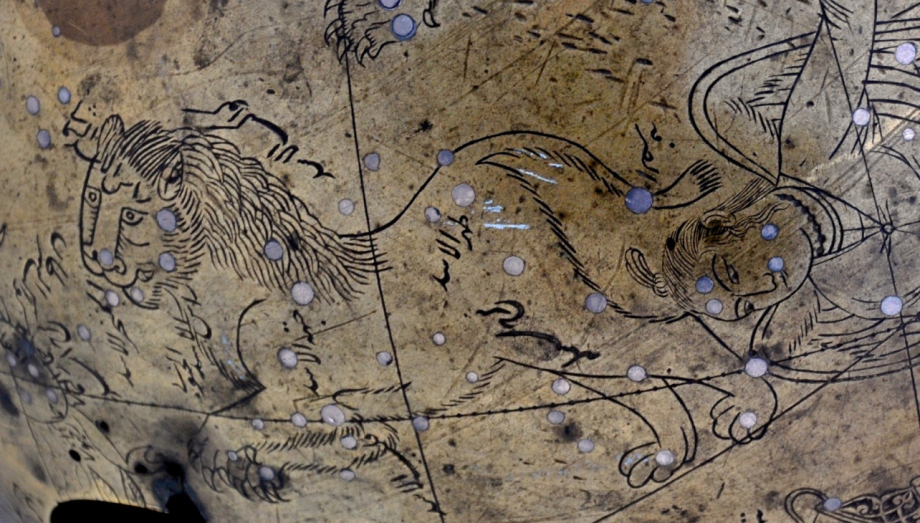
Aratus associated the Lion with the sun’s hottest path. Greek mythographers said that Leo was the Nemean lion killed by Heracles during his first labor.
The constellation of Leo consists of 27 formed stars and 8 unformed ones. The latter are the two over the back of Leo, the three under the belly and in front of the hind legs, and the three above the tail between Leo and Virgo and Ursa Major.
On the Manuchihr globe the constellation is labeled kawākib al-asad (the constellation of the lion). A larger lion was seen in this region of the sky in the Bedouin tradition, only part of which overlaps with the Ptolemaic Leo. The star on the mouth farthest from the ecliptic is labeled mankhar al-asad (the nose of the lion [κ Leonis]). The star near the eyes is labeled ra’s al-asad al-shimālī (the northern head of the lion [μ Leo, Rasalas]), and another one nearby is labeled ra’s al-asad al-janūbī (the southern head of the lion [ε Leo, Algenubi]). The very large star of the two contiguous ones on the upper part of the lower forearm is termed qalb al-asad (the heart of the lion [α Leo]). This first magnitude star was also called al-malakī (the royal one) from Ptolemy’s term βασιλίσκος (a little king), hence its modern name Regulus. The large star on the rump is labeled ẓahr al-asad (the back of the lion [δ Leo]). All of these star names reflect the Greek leonine outline transposed over the larger Arab one.
The star in the tail, however, is titled ṣarfah [β Leo, Denebola], which reflects the Bedouin tradition, according to al-Ṣūfī and al-Bīrūnī because of the change in the weather from heat with its rising at dawn before the sun and the change from cold weather with its setting at dawn. As part of the image of the larger lion of the Bedouin tradition, this star was called “the seed of the lion” (qanb al-asad) according to al-Ṣūfī, who added by way of explanation “that is to say, his scrotum” (wi‘ā qaḍībi-hi).